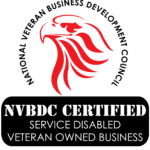As winter approaches, the imperative to safeguard commercial buildings against the challenges of the cold season becomes paramount. Whether engaged in constructing a new facility or renovating an existing structure, the focus shifts to winterizing commercial buildings to ensure resilience, efficiency, and occupant safety. In this comprehensive guide, we delve into the crucial steps that encompass winterization, providing valuable insights applicable to both construction sites and established properties. Discover essential practices that extend beyond the construction realm, offering homeowners and landlords actionable tips for creating winter-ready environments.
1. Winterizing Commercial Buildings: Fortifying Doors and Windows Against Drafts
In the pursuit of winterizing commercial structures, the first line of defense involves fortifying doors and windows against drafts. Unchecked drafts can significantly impact energy efficiency and occupant comfort. Sealing any open air gaps with weather stripping and caulking creates a robust barrier, preventing the intrusion of cold air and optimizing heating costs. While crucial for commercial construction, these measures are equally beneficial for homeowners seeking to enhance the energy efficiency of their residences.
2. Drains and Gutters: Clearing Debris for Optimal Winter Drainage
A critical aspect of winterization is maintaining optimal drainage by clearing drains and gutters of fall leaves and debris. This practice is essential for preventing water-related issues, such as ponding or freeze/thaw damage, both in new construction projects and existing buildings. By ensuring efficient drainage, property owners can mitigate the risk of water seepage, structural damage, and compromised foundations.
3. Pipes and Meters: Guarding Against Freezing for Structural Resilience
Exposed pipes and meters in non-conditioned spaces are vulnerable to freezing, posing potential hazards. Winterizing commercial buildings involves thorough insulation of sprinkler systems, supply lines, waste lines, and meter banks, especially in the context of new construction projects. Comprehensive care should be taken to address the entire building envelope, including disconnecting and draining water lines to prevent unwanted freeze/thaw cycling. This proactive approach not only safeguards the building’s infrastructure but also minimizes the likelihood of costly repairs.
4. Clean Chimneys and Exhaust Ducts: Ensuring Unobstructed Functionality
Regular inspection and cleaning of building exhaust systems, including chimneys and vents, are integral to winterization efforts. Birds and small animals can exploit even the smallest openings for nesting, posing threats to both occupants and the building itself. By prioritizing maintenance, property owners can avoid issues such as poor air quality and potential fire hazards during the winter months.
5. HVAC Equipment: Optimizing Efficiency Through Regular Inspection
A well-maintained HVAC system is indispensable for maintaining a comfortable indoor environment in winter. Regular inspections and service intervals are key to preventing unexpected breakdowns, particularly when heating elements are under increased demand. Proactive maintenance not only prolongs the lifespan of HVAC equipment but also ensures optimal efficiency, reducing energy consumption and operational costs for the commercial building.
6. Smoke and Carbon Monoxide Detectors: Safeguarding Occupants Through Regular Checks
Ensuring the proper functioning of smoke and carbon monoxide detectors is paramount for occupant safety during winter. Replacing batteries in battery-powered units, particularly in less-traveled areas, guarantees prompt detection of emergencies, such as fires or gas leaks, even in unoccupied spaces. This practice is equally relevant for homeowners and landlords looking to enhance the safety of their properties during the winter season.
7. Temporary Heaters: Emphasizing Safety on Construction Sites
For construction sites lacking power or HVAC systems, temporary heaters are a common solution for providing warmth. However, these heaters, often relying on open flames, demand special attention to safety. Proper fuel storage away from open flames, establishing a designated perimeter around heaters, and having a fire extinguisher on hand are essential safety measures. Regular inspection after each use, ensuring safe cooling off, and vigilance against sawdust or particulate matter minimize fire hazards on the construction site.
The focal point of this guide is on the comprehensive process of winterizing commercial buildings. From fortifying doors and windows to ensuring the proper functioning of HVAC systems and safety devices, these practices not only enhance a building’s resilience against winter challenges but also contribute to its long-term sustainability and energy efficiency. Construction companies, homeowners, and landlords can adopt these comprehensive winter-ready tips to create secure, efficient, and comfortable environments within their structures, ensuring they are truly winterized for optimal performance. If you are looking for more information on ways to winterize structures, contact ACE.



